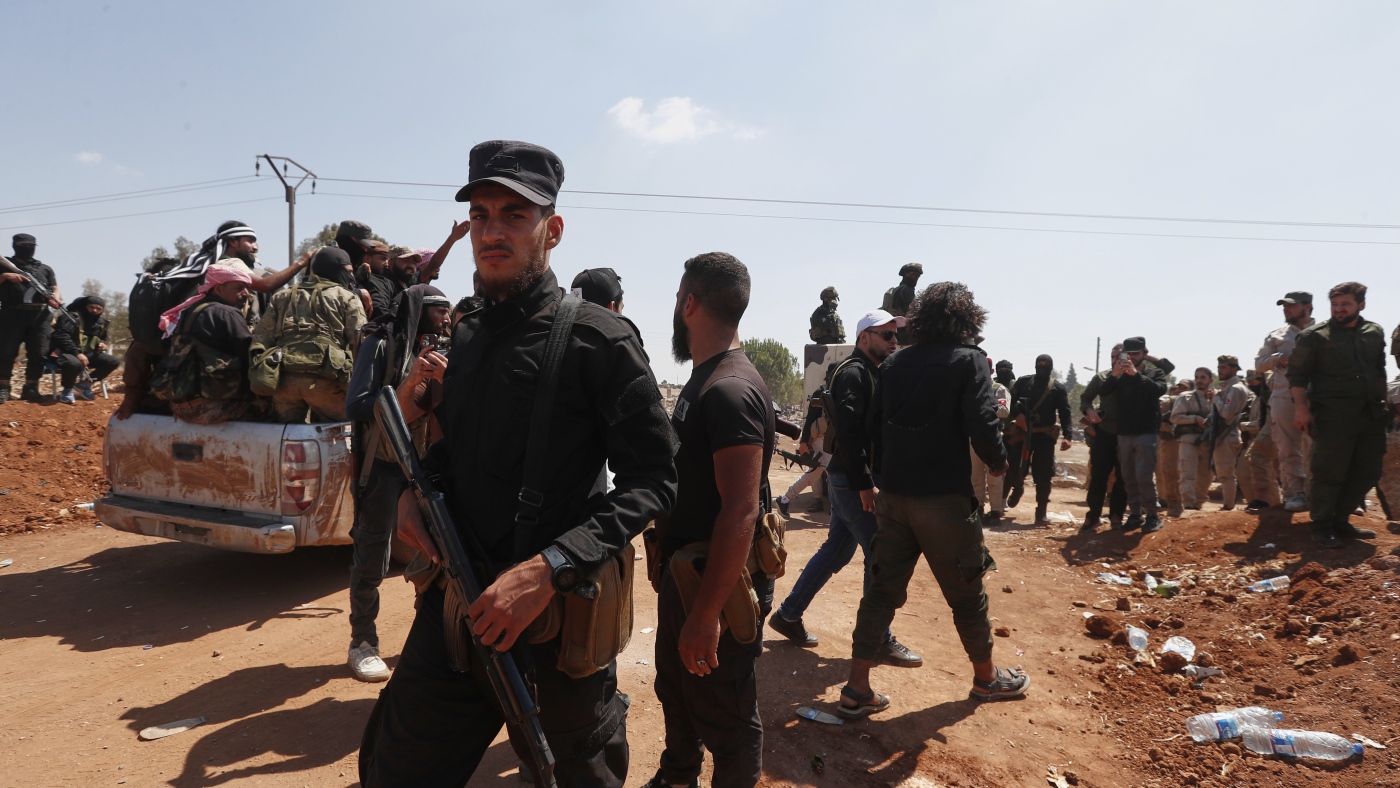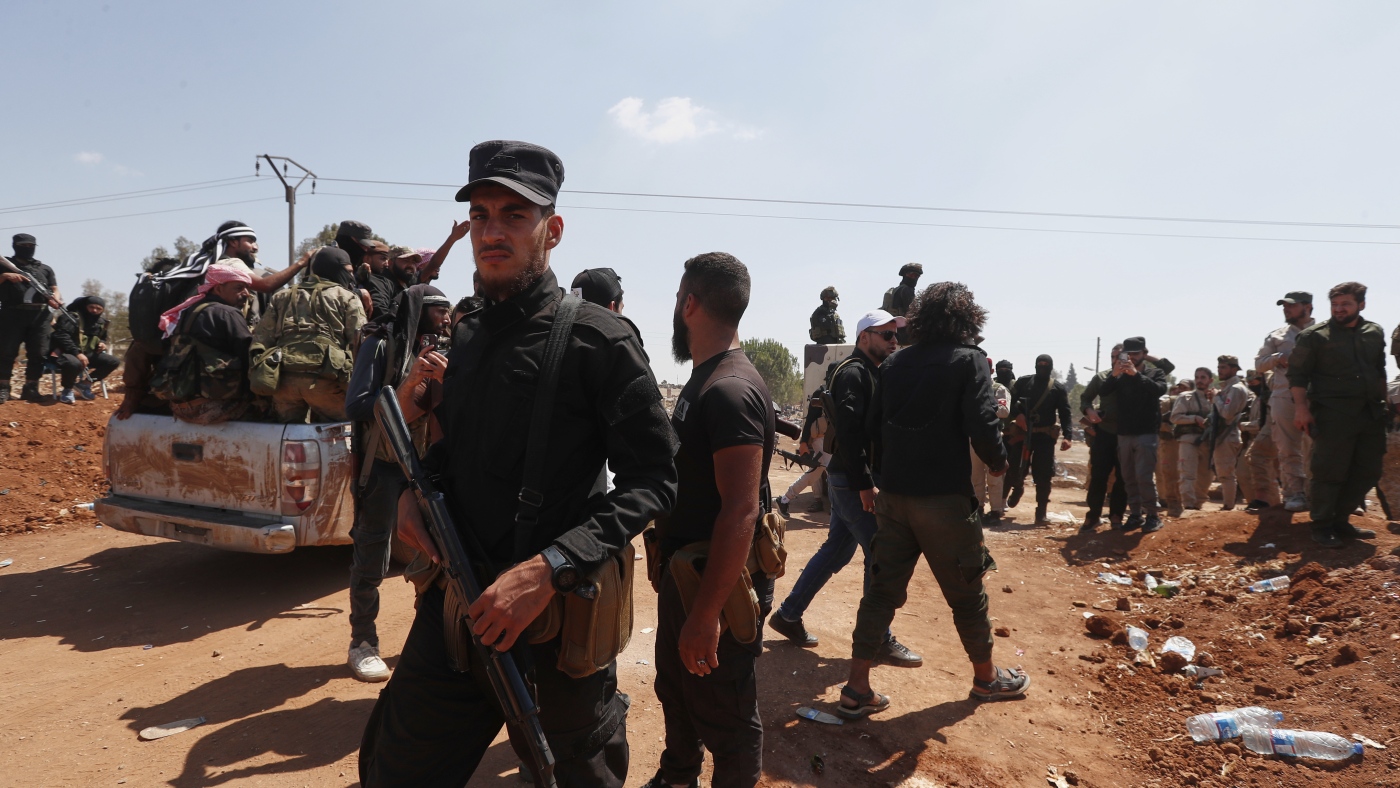The Fragile Threads of Peace in Sweida: A Delicate Balance in Syria’s Turbulent Landscape
A Moment of Respite in a War-Torn Region
The recent withdrawal of armed Bedouin clans from Sweida, a city in southern Syria, has brought a tentative pause to a week of brutal clashes that left hundreds dead. This development, mediated by a U.S.-brokered ceasefire, offers a fragile moment of hope. However, the underlying tensions and the precarious state of Syria remain deeply concerning. The conflict in Sweida is not an isolated incident but a microcosm of the broader challenges facing Syria—a country fractured by civil war, sectarian divides, and economic despair.
The Complex Tapestry of Sweida’s Conflict
To understand the significance of the Bedouin withdrawal, one must delve into the intricate layers of Sweida’s conflict. Sweida, home to a predominantly Druze population, has largely steered clear of the broader Syrian civil war, maintaining a degree of autonomy. However, this relative peace has been increasingly threatened by economic hardship, government neglect, and the rise of armed groups in the region.
The recent clashes were ignited by a confluence of long-standing grievances between the Druze community and neighboring Bedouin tribes. Disputes over resources, accusations of criminal activity, and tensions related to smuggling routes and land rights all played a role. The involvement of armed militias on both sides escalated the conflict, transforming localized disputes into a broader confrontation with devastating consequences. The sectarian dimension—with the Druze as a distinct religious minority and the Bedouin tribes predominantly Sunni Muslim—further exacerbated the tensions, contributing to the intensity of the violence.
The U.S.-Brokered Ceasefire: A Temporary Fix or a Lasting Solution?
The U.S.-brokered ceasefire and the subsequent withdrawal of Bedouin forces offer a glimmer of hope for stability in Sweida. However, the long-term viability of this agreement remains uncertain. While the ceasefire may halt the immediate violence, it does not address the root causes of the conflict. The underlying grievances, economic disparities, and the presence of armed groups continue to pose a threat to the fragile peace.
The role of the United States in brokering this ceasefire is noteworthy. While the U.S. has been involved in the Syrian conflict for years, its influence in southern Syria has been limited. This intervention suggests a renewed focus on de-escalation and stabilization in the region. However, the extent of U.S. commitment and its ability to sustain the ceasefire remain to be seen. Moreover, the involvement of external actors like the U.S. can be viewed with suspicion by some within Syria, potentially undermining the legitimacy and effectiveness of the agreement.
The Humanitarian Crisis and the Path to Recovery
The weeklong clashes in Sweida have resulted in a significant humanitarian crisis. Hundreds have been killed, and many more have been injured. The fighting has disrupted essential services, including access to water, food, and medical care. The arrival of humanitarian aid convoys is a welcome development, but the scale of the needs is immense. Rebuilding damaged infrastructure, providing medical assistance to the injured, and addressing the psychological trauma of the conflict will require a sustained and coordinated effort.
Beyond the immediate humanitarian needs, there is a pressing need to address the underlying economic and social factors that contributed to the conflict. Investing in economic development, creating job opportunities, and improving access to education and healthcare are essential steps towards building a more stable and prosperous future for Sweida and the surrounding region.
The Broader Implications for Syria
The conflict in Sweida and the subsequent Bedouin withdrawal have broader implications for the stability of Syria as a whole. The Syrian civil war has left the country fragmented and vulnerable to internal conflicts. The rise of armed groups, the proliferation of weapons, and the weakening of state institutions have created a breeding ground for local disputes to escalate into broader confrontations.
The Sweida conflict serves as a stark reminder of the fragility of the Syrian state and the challenges of achieving lasting peace. The involvement of sectarian and tribal elements further complicates the situation, making it difficult to find common ground and build trust between different communities.
The Syrian government’s response to the Sweida conflict will also be crucial in determining the future of the country. A heavy-handed approach could further alienate the Druze community and other minority groups, while a failure to address the underlying grievances could embolden other armed groups and lead to further instability. A more inclusive and conciliatory approach, focused on dialogue and reconciliation, is essential to building a more stable and unified Syria.
A Cautious Calm: The Road Ahead
The withdrawal of Bedouin forces from Sweida represents a moment of cautious calm in a region scarred by conflict. While the U.S.-brokered ceasefire offers a chance to de-escalate tensions, the underlying challenges remain. The long-term stability of Sweida and the broader Syrian context will depend on addressing the root causes of the conflict, providing humanitarian assistance, and fostering dialogue and reconciliation between different communities.
The international community, including the United States, has a role to play in supporting these efforts. However, ultimately, the future of Syria rests in the hands of the Syrian people themselves. Only through a genuine commitment to peace, justice, and inclusivity can Syria hope to emerge from the ashes of war and build a more prosperous and stable future for all its citizens.
Echoes of the Future: Will This Peace Hold?
The silence in Sweida today is not necessarily the sound of lasting peace. It’s more like the held breath before the next storm. The withdrawal is a tactical retreat, a pause in the fighting, not a resolution of the deep-seated issues that fueled the conflict. The echoes of gunfire may have faded, but the whispers of discontent, the cries for justice, and the seeds of future conflict still linger in the air. Whether this fragile peace holds depends not just on the absence of violence but on the presence of genuine reconciliation, sustained humanitarian aid, and a commitment to addressing the grievances that brought Sweida to its knees. Only then can the held breath be released, and the echoes of the future carry a song of hope, not a lament of war.








